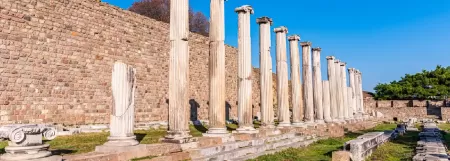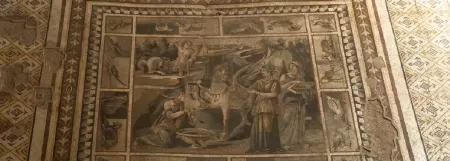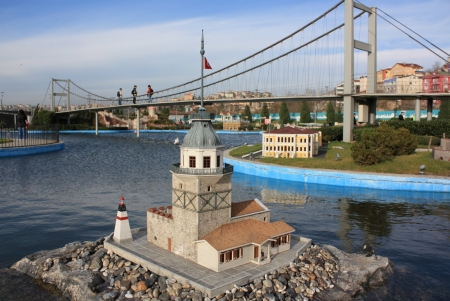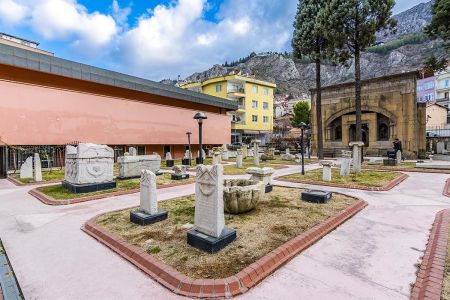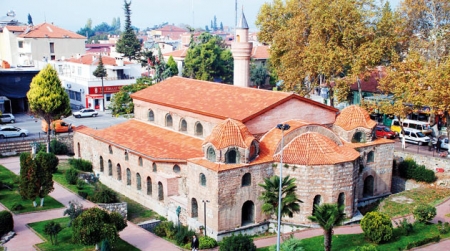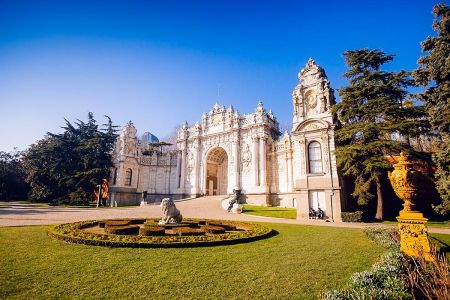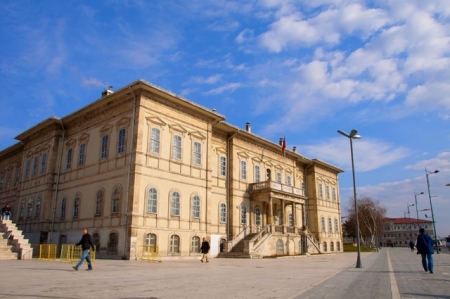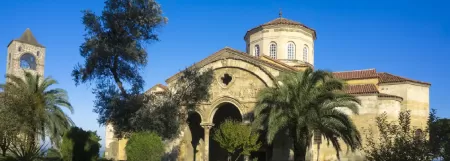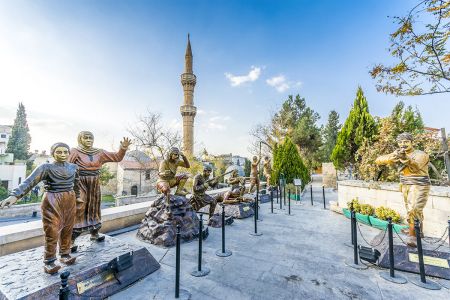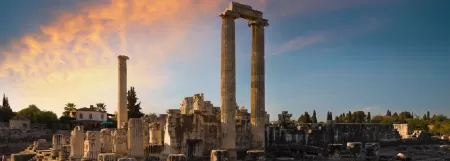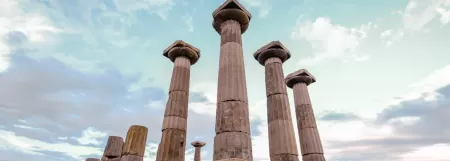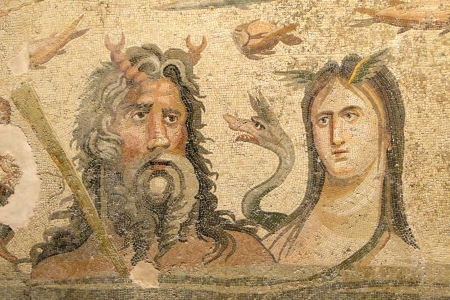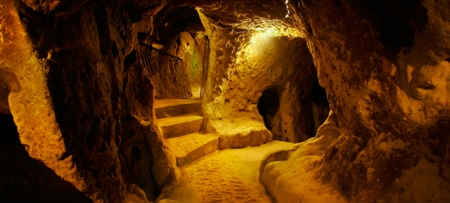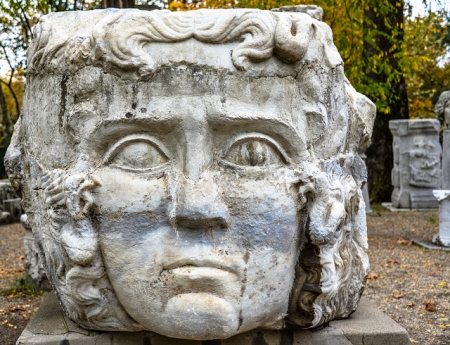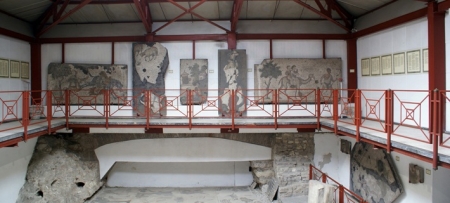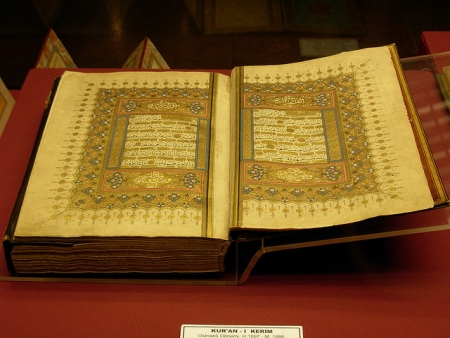Istanbul Topkapi Palace Museum
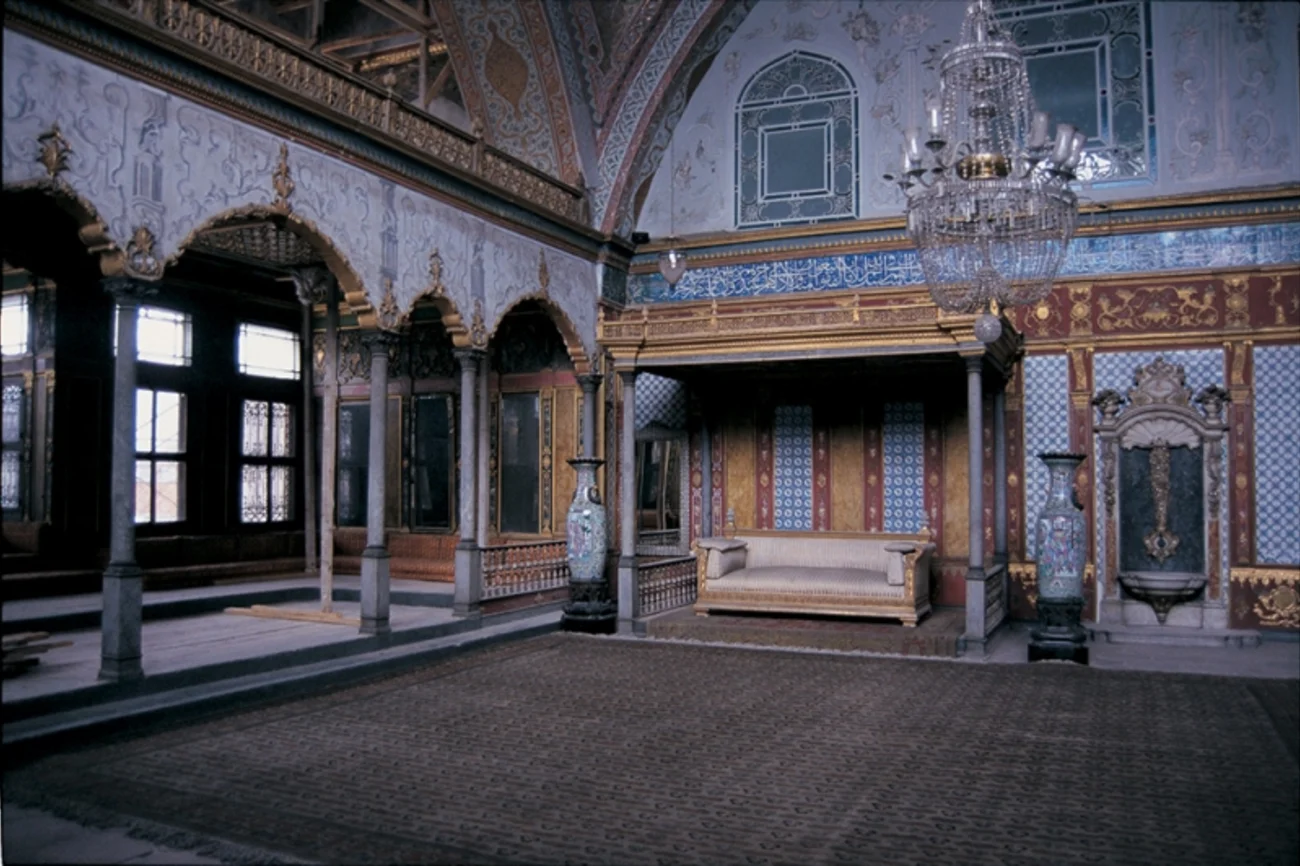
- The history of Istanbul Topkapi Palace Museum
- I- The Period of Kanuni Sultan Süleyman
- II- First Courtyard in the Istanbul Topkapi Palace Museum
- III- The Impressive Marmara
- The Exterior Treasury
Built on a domineering point along the Bosphorus after the conquest of Istanbul, the palace is located on the tip of the historic peninsula.
Used as state headquarters as well as home to the sultans until the 19th century during the Ottoman reign, Topkapi Palace was opened to the public as a museum after the declaration of the Republic. Spanning 700,000-meter squares of an area, the palace offers visitors its vast collection of more than 80,000 pieces of artwork,
in addition to the temporary exhibits.
The history of Istanbul Topkapi Palace Museum
Topkapı Palace, which was used as the centre of administration and residence of dynasty in İstanbul the capital city of the Ottoman Empire, was completed in 1473 only two decades after Fatih Sultan Mehmet conquered the city. Members of the Ottoman dynasty inhabited in the palace until they moved to the Bosphorus Palaces in the 19th century. By the order of Atatürk, Topkapı Palace was opened to visit as a museum after the proclamation of the republic in April 3, 1924.
Topkapı Palace is built on the Byzantine acropol situated in Seraglio-Point (Sarayburnu) which forms the headland for the historical İstanbul peninsula; between Marmara Sea, The Bosphorus and the Golden Horn. The Palace is seperated from the city by Sûr-ı Sultâni at the side of land which was built by Fatih, and at the side of the sea; by city walls of Byzantine. Besides a variety of doors with different functions and sea and land doors; Bâb-ı Hümâyûn (The Imperial Gate) which is situated behind Ayasofya forms the monumental door of the palace.
The reflection of the functional simplicity needed for a strong state which had experienced all kinds of splendour and protocol details for centuries is clear from the entrance of the palace. This gate, with its character in the 15th century, suits the castle-palace construction. Above the gate through which the public could enter there used to be a manor house that could stand up by the 19th century. It is known that regiments were watched from the manor house and special treasures were preserved in it.
I- The Period of Kanuni Sultan Süleyman
This period began when the Harem settled into Topkapı Palace and with Kanuni Sultan Süleyman and his official wife Hürrem Sultan who had a charismatic personality. As Topkapı Palace expanded between 1520 and 1530 it had changes in characteristics. Hürrem Sultan left the harem in the Old Palace and lived in the Harem of Topkapı palace with her children, which caused the family to meet all its needs from the Harem of Topkapı.
In this period, the dormitories for the eunuchs and the concubines must have been organized outside the dynasty buildings in the Harem in an order of two adjacent but separate rooms within a courtyard surrounding and even protecting the dynasty buildings. It is clear that, functionally, these buildings included the Chamber of the Chief Eunuch and the Bath House of Concubines. Accordingly, The Chamber of Masters and Heads of Servants which was an important part of the Harem must have been moved to the wing which borders
The Courtyard of the Queen Mother built in the era of Fatih on the opposite side of the Chamber of the Chief Consort. It is realized that in this period The Chamber of the Chief Consort was called after Hürrem Sultan in accordance with her position in the palace and Kanuni Sultan Süleyman built his Privy Chamber in the Harem which was renovated in the era of the Murad III.
Customize Your Dream Vacation!
Get in touch with our local experts for an unforgettable journey.
Plan Your TripFirst Courtyard in the Istanbul Topkapi Palace Museum
The largest courtyard of the palace The First Courtyard is separated from the private garden of the sultan (Hasbahçe), which stretches in the Marmara Sea and the Golden Horn direction, as it is situated in the major axis. In this courtyard between the Bâb-ı Hümâyûn and the Bâb-üs Selâm (The Gate of Salutation) where the interior palace begins are Birun (outer of the main palace) service buildings which were under the control of the gardeners (Bostancılar); they do not exist any longer today.
At the left hand side, wood-warehouses, the church of Hagia Eirene which was used as Cebehane (ammunition-store), royal mint buildings which were renovated and expanded in the 18th century are the structures that have survived to our day. In front of a cloister where statesmen and ambassadors used to tie their horses were successively a house for petition called Deavi Kasrı and Ebniye-i Hassa warehouses. At the right hand side of the avenue, Gülhane Hospital, Has Fırın and Dolap Ocağı which constituted the water-distribution system of the palace were the buildings in sequence that were bordering the First Courtyard.
Hasbahçe which has surrounded the palace in every period included many pavilions. The first of these pavilions is the Alay Köşkü (The Ceremonial Pavilion or The Parade Pavilion) built on a polygonal bastion on the opposite side of the Bâb-ı Âli Kapısı (Bâb-ı Âli Gate). The building which was used by sultans for watching various parades was renovated according to the Empire Style in the 19th century. Every year sultans used to watch the fleet ships put to sea from the Yalı Köşkü which was a polygonal open observation pavilion situated in the direction of the Golden Horn and on the side of Sirkeci. Because it was decide to build the railway through the garden, the pavilion was demolished at end of 19th century. It is supposed that the harem inhabitants used to watch these ceremonies from a 17th-century construction built in classic form called Sepetçiler Kasrı that has survived to our day.
Besides various dorms and buildings that belonged to gardeners, the most important pavilion in this area was the Çinili Köşk (The Tiled Pavilion) which was built with the palace itself by Fatih Sultan Mehmet. Known for its Timurid architectural style with its tiles and central plan with balconies, The Çinili Köşk was used as an archaeology museum in the era of the Abdulhamid II. In front of a gate with towers and cannons in Seraglio-Point because of which Saray-ı Cedid was lately called as Topkapı there was a wooden coastal palace which was built in Rococo style in the late 18th century at the seaside of Marmara Sea.
The summer-palace was stretching next to The Mermer Köşk (The Marble Pavilion) with porticos which has survived to our day since the early 16th century. The palace burned in 1860s and a railway was built in stead of it. İncili Köşk (The Pearl Pavilion) whose base is visible in the walls next to the non-existing summer-palace was an observation pavilion which was constructed by the chief architect Davud Ağa by the order of Koca Sinan Paşa to submit to the Murad III.
The Impressive Marmara
The Marmara Wall surrounding Topkapı Palace ended with two functional gates called Balıkhane (Fish Market) and Ahırkapı (Stable Gate). It is only the lighthouse built in the era of the Osman III that has survived to our day among the structures in this manor-house which included the large stables of the palace. On this side of the Hasbahçe where Gülhane Hatt-ı Hümayun (The Imperial Edict) was declared are the Cirit Meydanı (Jareed Square), The Gülhane Pavilion and The İshak Paşa Pavilion as well as the remains of the Byzantine Mangana Palace.
In the First Courtyard, one could see the glorious parade of the sultans upon arrival from or departure for a martial expedition or in ceremonial days such as Cuma Selamlıkları through the road with trees binding Bâb-ı Hümâyûn to Bâb-üs Selam. It is known that the Janissaries made use of this courtyard when they revolted against the palace and they opened up the gates. The main palace section which was determined by the gate with two towers called Bâb-üs Selam and the second gate which reminds modern European towers constitutes the citadel within the Sur-u Sultani. This place, in which various structures were surrounded by straight and strong wall-like buildings that look like bastions bulging into the courtyards, constitutes the whole palace with three courtyards in a row with different functions and the buildings surrounding them.
The forecourt in which no one could enter riding a horse other than the sultan called Divan Square is a place specifically for the top of the state administration with its buildings. In this courtyard, the most important axis between the garden divisions in which various animals once wandered around is the Bab-üs Saade axis which represents the sultan. At the left-hand side is the Divan-ı Hümayun (The Imperial Council Hall) representing the function of the square with three domes and porticos under the Tower of Justice whose body has remained from the era of Fatih. The Divanhane (assembly hall), the official building where the grand vizier and other viziers negotiated the state issues four days a week was composed of Kalem and Defterhane sections. The council meeting was held and the ambassadors were accepted in this place. With its eight domes and massive walls,
The Exterior Treasury
The Exterior Treasury, behind the Divanhane, was built for storing the official treasury of the state. The treasury was only used by the grand vizier and also the life was distributed to Jannisaries from the treasury every three months with a ceremony. Glebe Divanı was made for the ceremonies to which ambassadors were also invited. Since the palace was reopened as a museum, this section has been used for exhibiting the weapons that remained from the Early Islamic Period to the early 20th century.
Also, weapons specific to the Islamic-Turkish period and the Middle East are exhibited here. Kubbealtı (Divan-ı Hümayun) is separated by a small and obscure gate of the Harem Dairesi (The Chamber of the Harem) called Arabalar Kapısı (The Gate of Carts) situated on the side of Golden Horn. The gate also connects the Divan Square on the side of Golden Horn to the Hasbahçe- to the Hasahır system which was used by the sultans when they were leaving the palace. Surrounding the palace with a lower courtyard belonged to itself, The Has Ahır (Privy Stables) is known as one of the oldest buildings within the palace.
The stable which sheltered a few distinguished horses of the sultan included the harness treasury (Raht Hazinesi) which was under the responsibility of the administrator called 'imrahor' (master of the horses). Particularly in the official parades or as gifts to foreign countries, the harness sets were decorated with jewels. Another outstanding building in this section is The Beşir Ağa Mosque. Also, a group of functional buildings called the Baltacılar Koğuşu (The Dormitory of The Halberdiers with Tresses) situated in Divan Square.
The staff of the dormitory which was composed of the strong young men recruited through the devshirme system served as emcees, and also served in different positions within the selamlık and the harem. Expanded at the end of the 16th century, The Baltacılar Koğuşu took its final shape and it was like a separate quarter with The Divan Square, The Harem, the bathhouse surrounding the courtyard in front of the Has Ahır, the dormitory, the mosque and the çubuk odası (the resting place for the Zülüflü Baltacılar).

